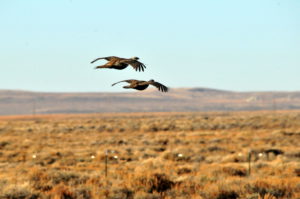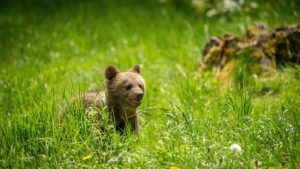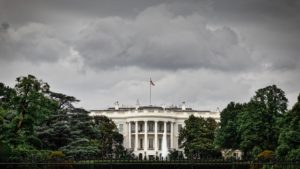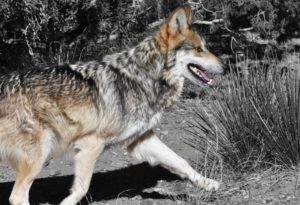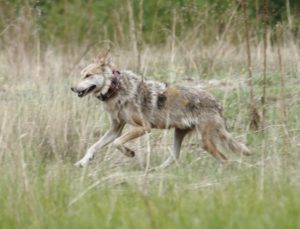For Release: Friday, December 9, 2022
Contacts:
Lindsay Larris, WildEarth Guardians, 720-334-7636, llarris@wildearthguardians.org
Michelle Lute, Project Coyote, 406-848-4910, mlute@projectcoyote.org
Michael Saul, Western Watersheds Project, 303-915-8308, michael@westernwatersheds.org
Madeline Bove, the Humane Society of the United States, 213-248-1548, mbove@humanesociety.org
Delia Malone, Colorado Sierra Club, 970-319-9498, Delia.malone@rmc.sierraclub.org
Concerns remain that plan would only protect a token population of wolves
DENVER, CO (December 9, 2022)— Colorado Parks and Wildlife released its draft Wolf Restoration and Management Plan to the public today. While it holds some promise, conservationists say that it falls short in its statutory mandate to base decisions on the “best scientific data available.”
In July, conservationists shared their own Colorado Wolf Restoration Plan that aimed to help guide the work of CPW. In contrast to that plan for full ecological recovery, the state plan skirts the law, departs from the best available science and will not achieve Proposition 114’s goal of restoring a natural balance to Colorado’s public wildlands. There is still time for the CPW commissioners to make significant, critical improvements to the plan before it is finalized in May, and the public comment period, which is now underway, will play a significant role.
“We’re grateful for the work and thought that has gone into this wolf plan, but it falls short of charting a course toward meaningful restoration of wolves in Colorado,” said Lindsay Larris, wildlife program director for WildEarth Guardians. “We’d like to see more incorporation of components of the Colorado Wolf Restoration Plan that WildEarth Guardians and our partners put forward this summer, including increased population goals, prohibition of killing wolves on public lands, and the explicit preclusion of any recreational wolf hunt as part of a final plan in order for Colorado to set the stage for recovery and coexistence.”
“The ethical weight of good decision-making is a needed foundation to any restoration plan for wildlife,” said Nancy Kochis of Herbal Gardens Wellness. “We have long lived amongst the wolves and watched their populations decline due to similar policies governing them and our Carlana Apache people of the Rio Grande Southern Athabaskan tribes. We applaud the good measures within components of this plan, but we also sternly warn that much more is needed. The Apache and 48 other Nations who shared this territory have symbiotically existed with our wolf relative along with the eagle, bear, and buffalo, and all are needed in the restoration of the land and water.”
“Wolves are highly intelligent, empathetic and deeply devoted to their families,” said Aubyn Royall, Colorado state director for the Humane Society of the United States. “While the draft wolf plan is an important milestone on the road to restoring wolves in Colorado, CPW must make changes to align the plan with sound science and the will of Colorado voters by explicitly stating that wolf trophy hunting or other recreational wolf killing will not be allowed in the future.”
Proposition 114—which was voted into law in 2020 and prompted the reintroduction process—calls for a self-sustaining wolf population. However, CPW’s draft plan calls for wolves to lose their state-protected status after only 150 individuals are present in the state for two consecutive years. Leading scientific studies and models cited in the conservationists’ Colorado Wolf Restoration Plan indicate that a self-sustaining population would require a minimum of 750 individual wolves in Colorado.
The CPW plan also neglects to include any geographic considerations for measuring wolf recovery, which could result in a small, isolated population of wolves in only one area of the Western Slope. Because wolves bring positive ecosystem impacts, if they are present in sustainable numbers and their population is widely distributed, it is important that they be restored throughout suitable habitat west of the Continental Divide, which is the geography specified by Proposition 114.
“In an epic vote, Coloradans chose to restore a natural balance to our vast public wildlands by reintroducing gray wolves to Colorado,” said Delia Malone, wildlife chair of the Sierra Club Rocky Mountain Chapter. “Wolves can be instrumental in initiating the recovery of biological diversity and ecosystem resilience by restoring a balance between ungulates and their vegetation. But wolves can only accomplish their ecological effect if they are widely distributed in genetically viable populations and their families are not disrupted by lethal management or trophy hunting. Their recovery goal of 200 wolves is managing for extinction.”
CPW’s draft allows for wolves to be killed on protected public lands. Killing wolves can disturb pack structure and population stability. Under some circumstances, livestock owners and agency personnel would be allowed to kill wolves based on dangerously vague guidelines for “chronic depredation,” or even based on discrepancies between deer and elk populations and hunting-based herd objectives. In an August 2022 statewide survey of 1,500 likely Colorado voters, weighted to Republicans and Western Colorado voters, nearly two-thirds said they believed that Colorado’s gray wolves should not be trophy hunted or trapped after they are restored to Colorado.
“Multiple scientific studies have shown that killing wolves does nothing to reduce livestock losses, and a new study from Alaska shows that, over 40 years of wolf killing programs, that killing wolves doesn’t increase hunter success either,” said Michael Saul, Colorado director with Western Watersheds Project. “Colorado’s natural ecosystems provide ample opportunity for wolves, deer and elk, and agriculture to coexist and thrive; the idea of slaughtering wolves is rooted in fear, not science, and should have no role in a voter-approved, science-based recovery effort.”
The plan excludes any requirement for livestock owners to use protective measures when wolves are present near cattle and sheep, instead placing the onus of coexistence on native wildlife. Livestock owners will be compensated for losses attributed to wolves without only the most minimal incentives to implement tried-and-tested coexistence methods to minimize and deter predation. And wolves face the threat of being killed even when livestock owners fail to protect their livestock.
“The evidence is clear: non-lethal tools work to protect wild and domestic animals,” said Michelle Lute, PhD in wolf conservation and carnivore conservation director for Project Coyote. “Compensation, while helpful to operators’ bottom line, cannot be the sole solution to conflict. To protect rural economies, sustainable livelihoods and Colorado’s future, nonlethal human-wildlife coexistence is key.”
The draft plan will now be considered by the CPW Commissioners who will receive public comment in-person and virtually through April 2023. The public input meeting schedule can be found on the CPW website. Commissioners will have the opportunity to amend the plan before it is ratified on May 4, 2023, at a Commission meeting in Glenwood Springs.
Wolves in Colorado are currently protected as endangered species under the federal Endangered Species Act. CPW’s wolf management plan–allowing the state to manage a federally protected species–requires the permission of the Fish and Wildlife Service, a process that is on-going with the aim of completion prior to December 31, 2023.
# # #

